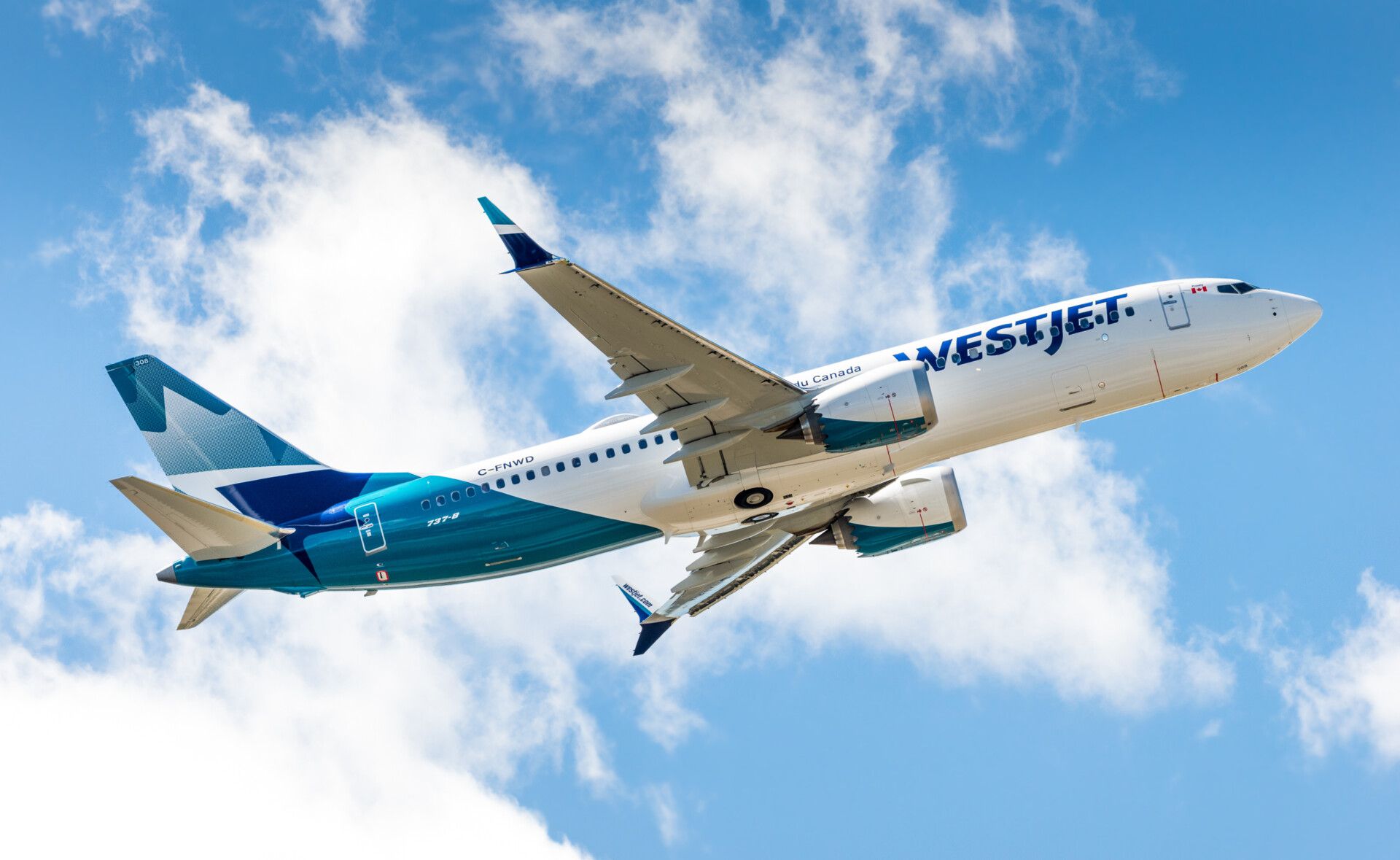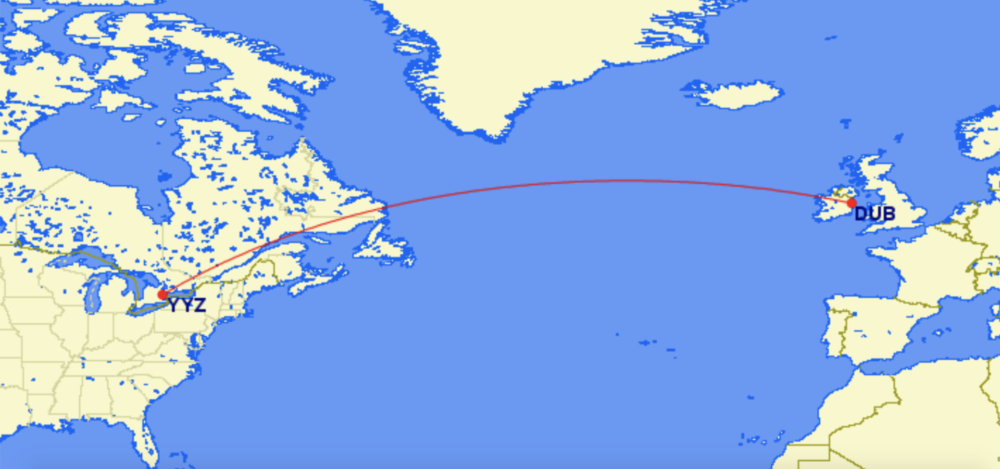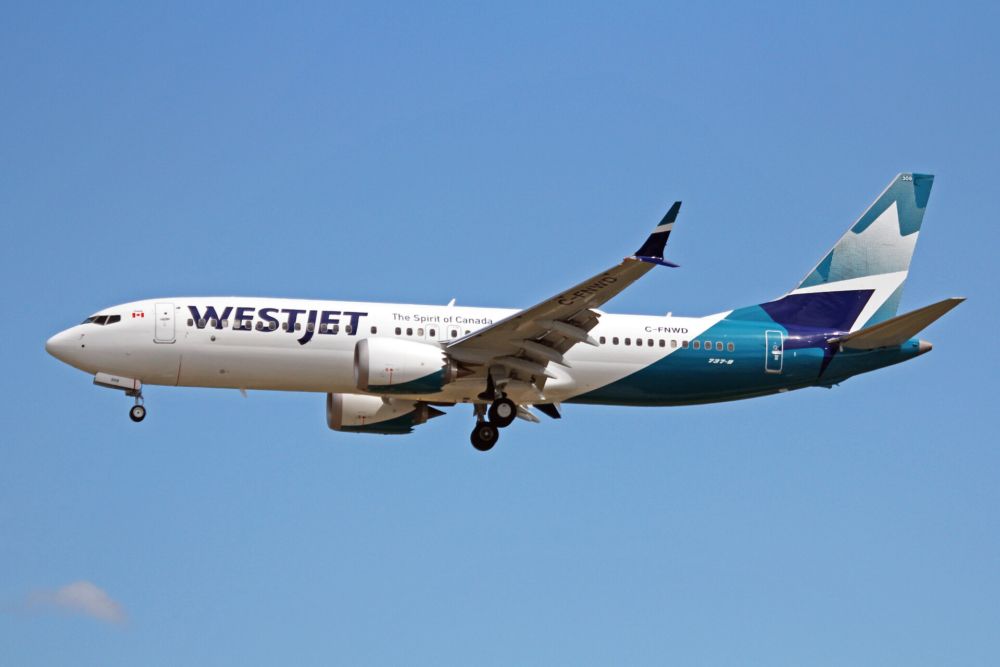WestJet is eyeing a new transatlantic route from its hub at Toronto Pearson International Airport (YYZ). Starting in May, the airline will fly to Dublin, Ireland, on a seasonal summer service four times a week before increasing that to daily flights in June. WestJet will use a Boeing 737 MAX to run these flights, extending that type's transatlantic service with the airline to another route.
WestJet adds Dublin from Toronto
WestJet continues to expand its transatlantic network from Toronto. Starting on May 15th, WestJet will connect YYZ to Dublin Airport (DUB) four times per week. By June 2nd, 2022, the route will increase to daily frequencies. Daily flights will run until October 1st, when WestJet will bring the route down to four weekly until October 28th.
Flights will run with the following schedule (all times are local):
- Departing Toronto at 21:10 and arriving in Dublin at 08:45 the next day
- Departing Dublin at 10:05 and arriving in Toronto at 12:40
John Weatherill, WestJet Chief Commercial Officer, stated the following:
"As demand increases, we know travellers are looking for convenient and affordable options for travel between Canada and Europe. As we continue to focus on expanding our network from our Toronto hub where we offer 33 international destinations, these flights will further strengthen business and leisure ties between Canada and Ireland and will increase connectivity between two key markets."
The route to Dublin from Toronto will complement WestJet's flights from Calgary and Halifax to Dublin. Flights from Calgary will run on a Boeing 787 Dreamliner, while Halifax to Dublin will also see Boeing 737 MAX operations.
Stay informed: Sign up for our daily and weekly aviation news digests.
The aircraft
WestJet will utilize a Boeing 737 MAX 8 on this route. This aircraft has room for 174 passengers, split across 12 in "Premium Class" and 162 in economy. Passengers will need to bring their own devices onboard to stream inflight entertainment, but power is available.
Economy class is laid out in a standard 3-3 configuration for the Boeing 737 MAX. Meanwhile, at the front of the plane, WestJet's premium cabin is a recliner-style product akin to an international premium economy cabin or a domestic premium cabin.
WestJet has been using the 737 MAX to grow its transatlantic flight schedules. The aircraft will be flying all transatlantic service out of Halifax next year. Recently, WestJet also announced an expansion of flying to Scotland, also using the Boeing 737 MAX. The 787 Dreamliner is reserved for some more important routes, such as flights to London from Toronto.
A competitive route
Next summer, including WestJet, four airlines are set to connect Toronto with Dublin. The other three airlines are Air Transat, Aer Lingus, and Air Canada. Air Transat and Aer Lingus will both fly the Airbus A321LR on the route. Air Canada, meanwhile, will fly a Boeing 787-9 between the two cities. Both Aer Lingus and Air Canada will offer lie-flat seats on the route in business class. WestJet, Air Transat, and Air Canada will fly a premium economy cabin on the route.
The Boeing 737 MAX will be the right aircraft to go after a more leisure-heavy demographic of travelers. While some business travelers will be stepping onboard the aircraft, the higher profile and higher spending of those are likely to shell out for a lie-flat seat on Aer Lingus or Air Canada.
WestJet is also awaiting delivery of more Dreamliners that it could use to take over some of these routes if they perform well. But, for now, to expand its transatlantic network, WestJet is betting on the MAX.
Are you going to fly WestJet's new Toronto-Dublin route? Let us know in the comments!



